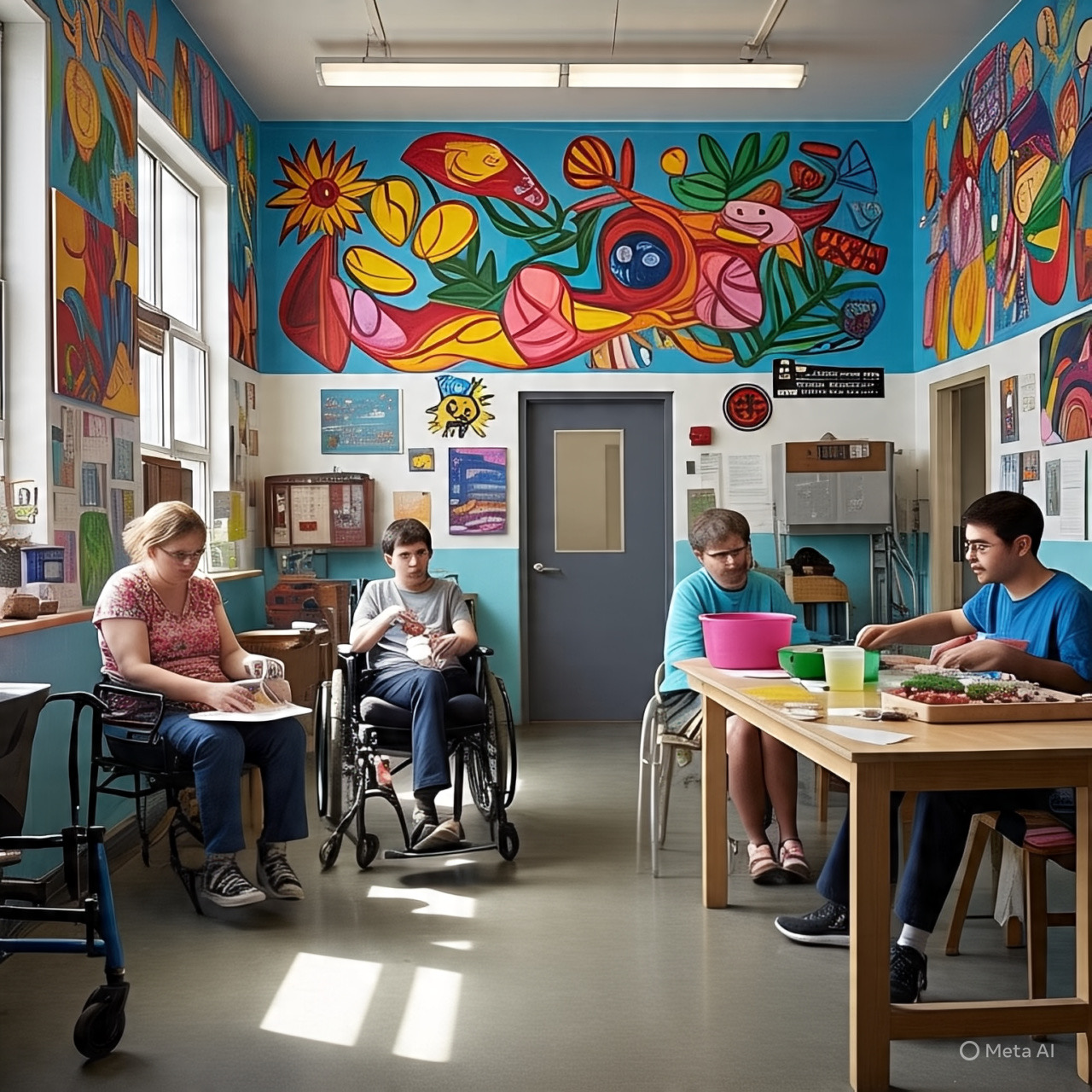Imagine a place where support is not about restriction but about release. A place not just to live—but to become. For people with disabilities across the city, Supported Independent Living or SIL in Melbourne is transforming from a bureaucratic term into a lifeline of opportunity. It’s not just about receiving care—it’s about regaining power. It’s about cooking your first meal, catching your first tram solo, laughing in a living room filled with friends, or earning your first paycheck. SIL in Melbourne is quietly rewriting stories—turning “I can’t” into “I did,” and “maybe someday” into “today.”
Emily’s Canvas: Art, Freedom, and a Life Reimagined
Let’s start with Emily—a name now associated with vibrant acrylics and gallery openings, but who lived in the fluorescent-lit hallways of a nursing home not long ago. At 28, with cerebral palsy and a love for painting, Emily’s biggest challenge wasn’t her physical disability—it was the stifling environment around her.
Things changed when Emily moved into a home for services related to SIL in Melbourne’s leafy north. For the first time, she chose what to eat, what time to wake, and which paintbrush to pick. With 24/7 assistance when she needed it—but the space to explore when she didn’t—Emily’s life expanded. Once confined to sketchbooks under her bed, her artwork now adorns community centre walls. “It’s not just a home,” she says, “It’s my gallery of possibilities.”
Jake’s Garden: Growth Through Purpose
Then there’s Jake. Quiet, sharp, and on the autism spectrum, Jake used to shy away from crowds, eye contact, and unfamiliar tasks. Unemployed and disheartened, he didn’t know where he belonged. That changed when he entered a residence nestled for SIL in Melbourne’s west—a home with expansive windows, a garden out back, and support workers who saw more than his diagnosis.
Through structured routines and gentle encouragement, Jake found his rhythm. A love for plants turned into a TAFE course. The TAFE course turned into a job. Now, Jake works three mornings a week at a community garden, his fingers deep in the soil, his smile effortless. “People think SIL in Melbourne is about getting help,” Jake says. “But it’s also where I started helping myself.”
Housemates and Karaoke Nights: The Power of Connection
Not all transformations are dramatic. Some are as simple—and powerful—as shared laughter in a kitchen. Nina, a 35-year-old with a psychosocial disability, had grown used to silence. Years of social withdrawal had made loneliness her closest companion.
But things shifted when she moved into a SIL home in Melbourne’s southeast. Her housemates liked the same music. Karaoke nights became a regular event. The TV always played something light and silly. And the support staff didn’t just assist with medications—they encouraged friendships. “We don’t just live together,” Nina explains, “we live together.” Her story is a quiet revolution—a reminder that joy is just as essential as food or medication.
Tailored Lives: One Size Fits None
What makes SIL in Melbourne truly exceptional is the deep commitment to personalization. Here, cookie-cutter care plans have no place. The blueprint is each person’s goals, culture, abilities, and passions. You’ll get kitchen tools and support if you want to cook your family’s traditional recipes. If you’re going to attend university, someone will help you manage your schedule, budget, and assignments.
This approach acknowledges a profound truth: disability is just one aspect of a person—it does not define the story. Melbourne’s providers embrace that idea by designing support systems that flex and grow as the individual does.
Melbourne’s Melting Pot: Diversity Meets Dignity
Melbourne’s identity is stitched from a thousand cultures, languages, and lived experiences—and providers offering SIL in Melbourne reflect that beautifully. Homes cater to dietary preferences, spiritual needs, and cultural traditions. You’ll find support staff fluent in languages ranging from Arabic to Mandarin. You’ll find prayer spaces and Eid celebrations. You’ll find understanding—not just tolerance.
In multicultural Melbourne, SIL isn’t just about fitting into a program. It’s about the program fitting around you.
Beyond Four Walls: Finding Your Place in the City
SIL homes are launching pads—not destinations. Participants are actively supported in engaging with the broader world by taking public transport, volunteering, attending festivals, enrolling in workshops, and participating in sports or creative groups. For some, that might mean performing in a community choir. For others, it’s going to their first AFL game or walking the laneways of Fitzroy with confidence.
Melbourne becomes more than a backdrop—it becomes a living, breathing part of each person’s journey.
Tech Meets Care: Smart Support in the Digital Age
Technology is also playing a transformative role. Voice-activated assistants help with reminders. Tablets with communication apps give non-verbal participants new ways to express themselves. Safety systems monitor well-being discreetly. From bright lighting to medication trackers, tech in SIL homes ensures support is there—but never intrusive.
These tools are not just convenient—they restore autonomy. And when autonomy returns, so does self-worth.
Not Just Care—Confidence
Every story above shares one common thread: SIL in Melbourne is about more than care—it’s about confidence. The confidence to make mistakes. To try new things. To say, “I’ll do it myself.” Whether through employment, friendship, education, or art, people are not just surviving—they own their stories.
Families, too, benefit. The peace of knowing their loved ones are not only safe but thriving is priceless. For many, it’s the first time in years they’ve exhaled.
The Future Looks Like Freedom
So, what does thriving look like in the context of disability? It resembles Emily’s brushstrokes, Jake’s soil-covered hands, and Nina’s karaoke nights. It seems like independence with a safety net—not a cage. It looks like freedom with scaffolding.
In Melbourne, Supported Independent Living offered by DMA Caring Hands is lighting up lives—quietly, powerfully, and one individual at a time. And with every empowered participant, a new narrative is written—not of limitation, but of limitless potential.
Because when we design support with humanity, creativity, and dignity at its core, we don’t just help people live—we help them shine.

